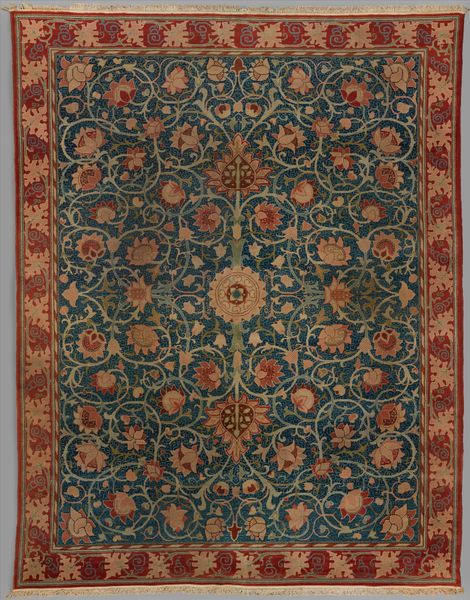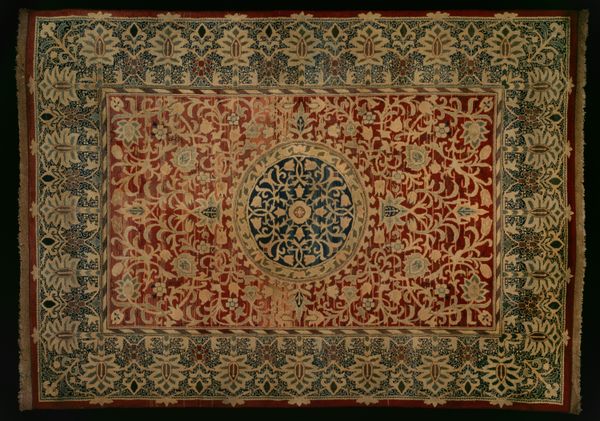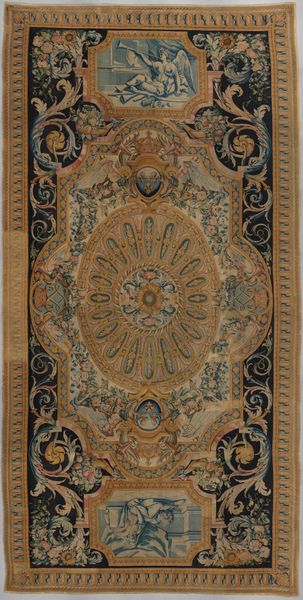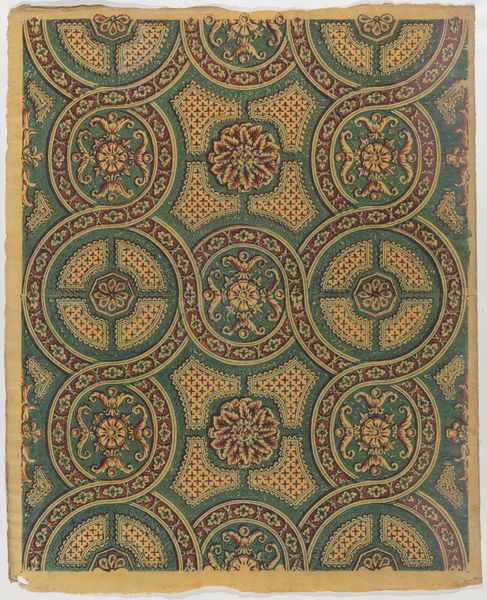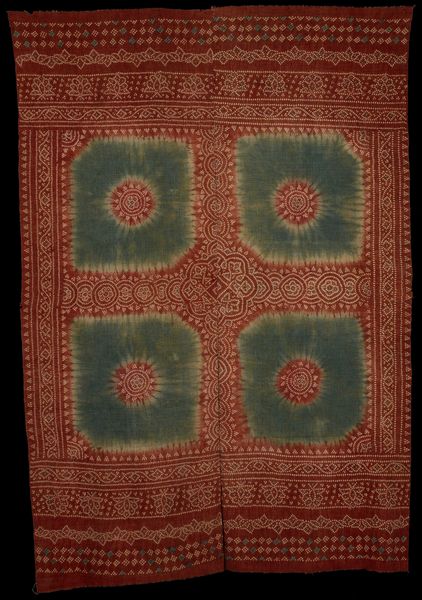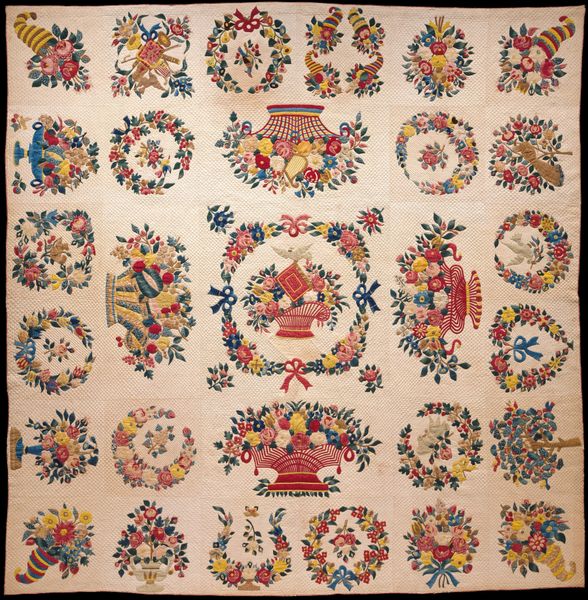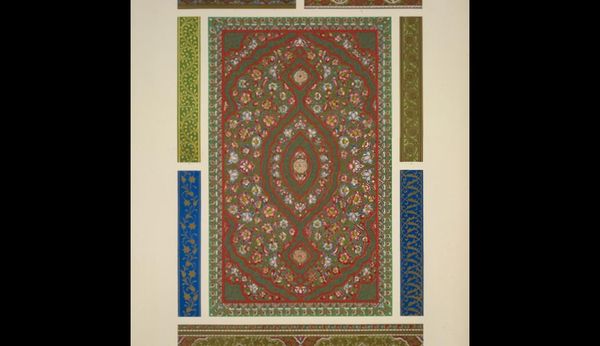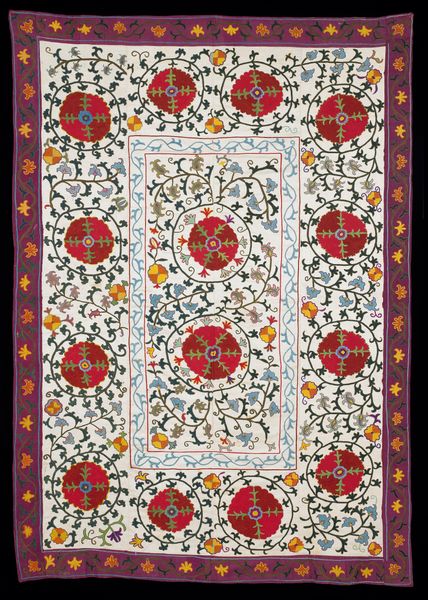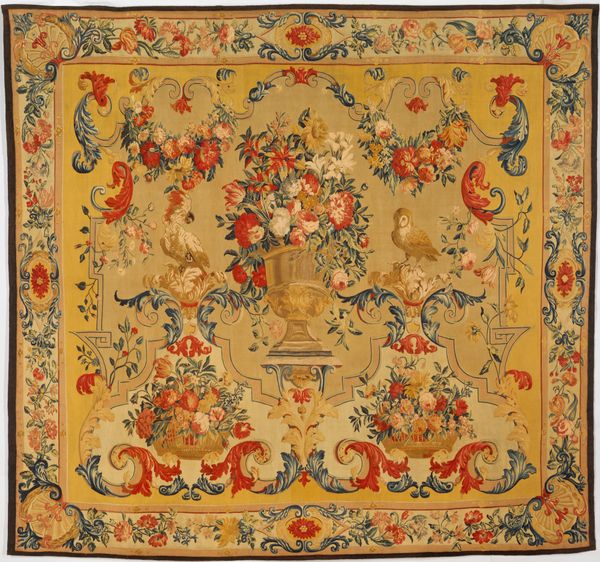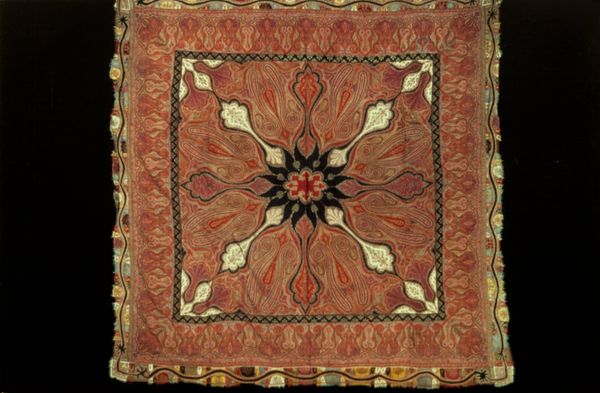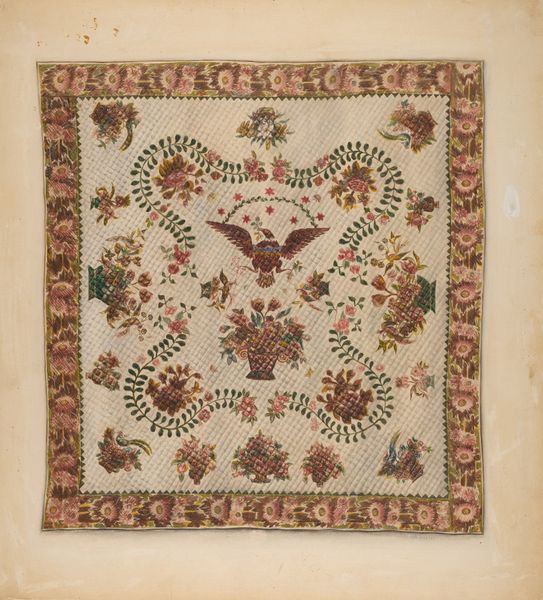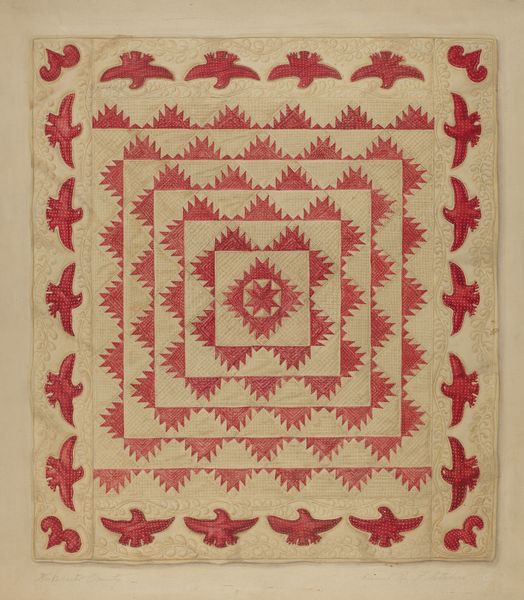
weaving, textile
#
weaving
#
textile
#
decorative-art
Dimensions: 122 × 97 in. (309.9 × 246.4 cm)
Copyright: Public Domain
Curator: This "Carpet," likely crafted in Aubusson sometime between 1814 and 1830, presents a fascinating study in Romantic ideals executed in textile. It's now held by the Metropolitan Museum of Art. Editor: My immediate thought is of muted opulence. It’s grand in scale and concept but restrained by the earthy, almost moss-like, tones. There’s something…stately, but also grounded. Curator: Precisely. Consider how the floral motifs, while decorative, speak to the Romantic era's fascination with nature as both a source of beauty and a reflection of emotional states. The central medallion, radiating outward with meticulously woven flowers, can be seen as a symbol of harmony and order. Editor: Woven meticulously, indeed. The detail in the scrolling acanthus leaves and those stylized florets lining the border—you really appreciate the labor, the sheer hours put into something like this. It must have been destined for a space that emphasized social display and also daily usage and degradation. I wonder about the hierarchy of the workshops. Curator: The motifs themselves, so central to understanding the aesthetic, owe quite a bit to neoclassical revival but the colour scheme points toward that more grounded feel. In this context, perhaps they suggest ideas about permanence and cyclical return, connecting the ephemeral nature of flowers to larger concepts of time and memory. Editor: Interesting. Because I tend to think about where this was made, what was happening, you know? The rise of industrialization—looms starting to change how things are made. Thinking of the workers producing it and the contrast between that craft labor and more mechanical processes that were starting to be used elsewhere... Curator: That tension, I agree, is vital. It’s not only a decorative object; it is representative of that very delicate period when handmade and mass production are in direct dialogue with each other, even struggling. Editor: It gives us a way into thinking about material culture, luxury and changing economic realities in that time. Even those pastel shades probably speak to a certain available chemistry or a shift in taste with increased consumption... Curator: In considering its intricate design and masterful construction we gain insight into a specific moment in European history when craft traditions and emerging industrial methods started reshaping social expectations. Editor: Exactly, we can recognize it’s an artifact of a society in the throes of reinventing itself. The “Carpet” offers much more than first meets the eye.
Comments
No comments
Be the first to comment and join the conversation on the ultimate creative platform.
